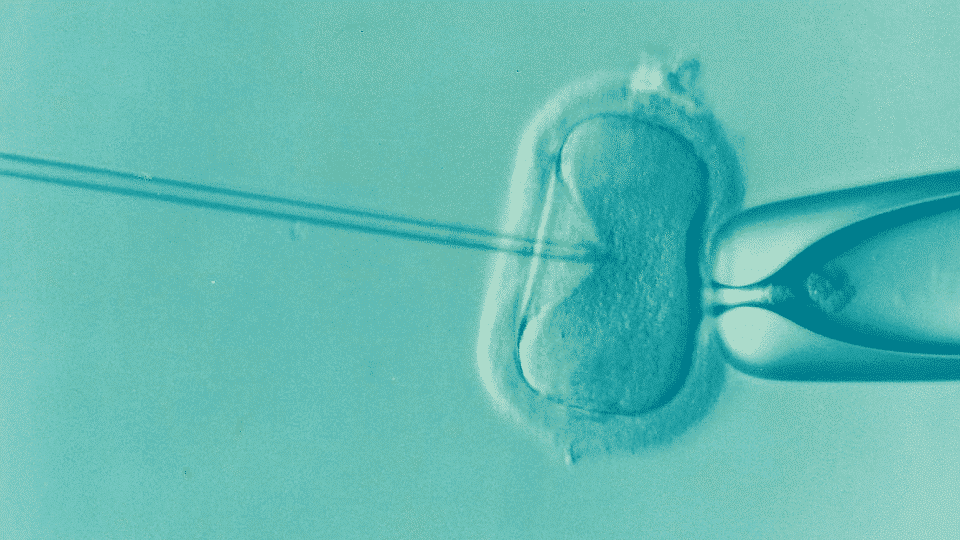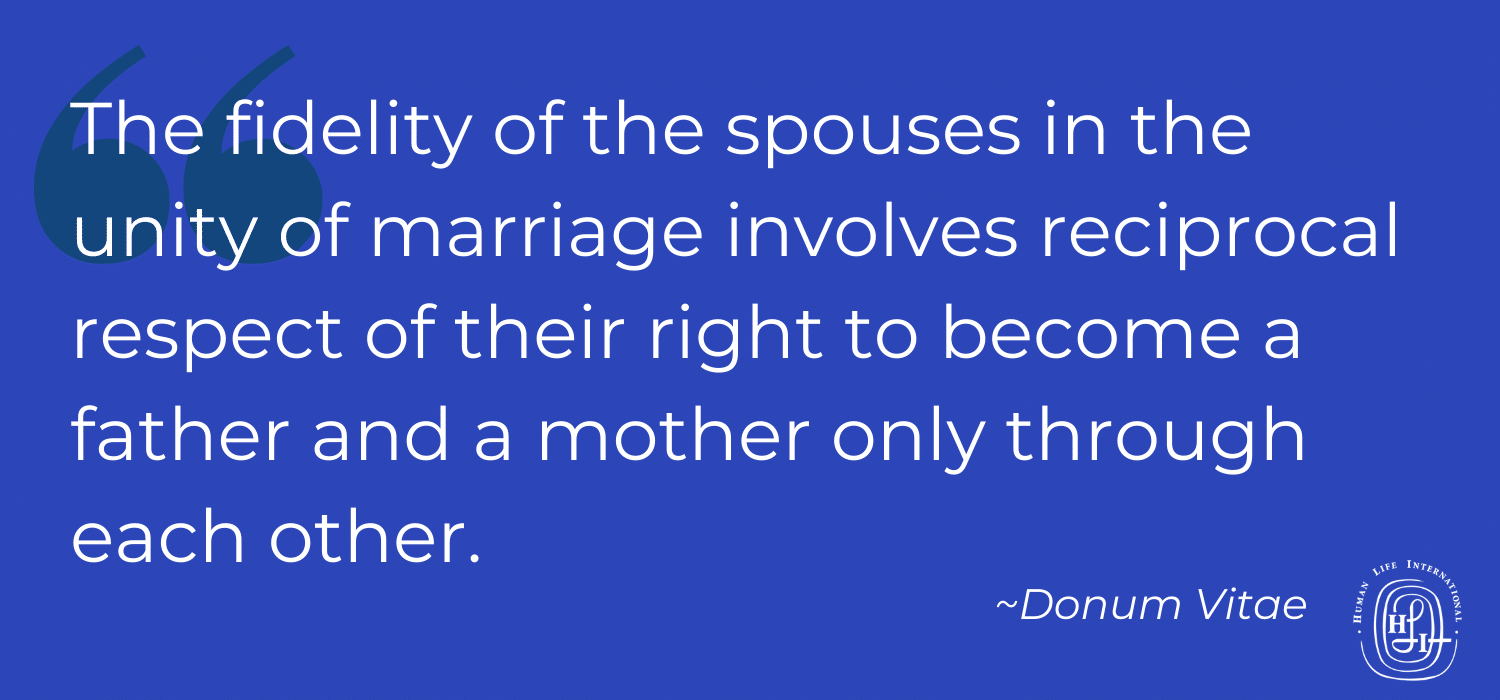One of the most amazing gifts of a marriage is children. The excitement of a new life coming into the world cannot be matched by much. That’s why it’s so difficult, as a faithful people, to witness the sadness of couples who face infertility.
With our country’s advances in technology, couples facing infertility have myriad options for ways to artificially conceive a child. IVF—or in vitro fertilization—is a multimillion dollar business, with the average cost of a cycle being $10,000 to $15,000, or more!

IVF
Some say this is a small price to pay for a child, for how could we ever put a price on a human being?
But cost aside, IVF is not something Catholic couples can or should partake in. And often, many couples aren’t even aware of this fact.
In this article, we will discuss fertility treatments that are ethical according to Catholic teaching. But first, we must understand the reasoning behind the Church’s teaching.
Why Does the Church Denounce IVF?
IVF is considered illicit because it treats children like commodities. It is illicit because the marital embrace is omitted from the creation of the child. And it is illicit because, as a result of the fact that multiple embryos are often created, some are thrown away, some are frozen, and some are even used for research.
This is not how the Church or God wants us to treat tiny human beings. As children of God, we must see babies as they truly are—gifts from God the Father.
We feel compassion for those couples who believe that IVF might be their only option. So we do what we can to guide them. And we try to steer those couples toward someone who can help them find a solution. Likewise, the Church hears and understands the pain of these couples. The Church knows how desperate they are to conceive a child. But it cannot consider IVF to be a moral solution.
Though there are many kinds of IVF, most require the manipulation of the sperm and the egg outside the woman’s body so that the sperm then fertilizes the egg. According to the Congregation for the Doctrine of the Faith’s document Donum Vitae:
For human procreation has specific characteristics by virtue of the personal dignity of the parents and of the children: the procreation of a new person, whereby the man and the woman collaborate with the power of the Creator, must be the fruit and the sign of the mutual self-giving of the spouses, of their love and of their fidelity…. The fidelity of the spouses in the unity of marriage involves reciprocal respect of their right to become a father and a mother only through each other. The child has the right to be conceived, carried in the womb, brought into the world and brought up within marriage.

But couples facing infertility must not lose hope. There is a better path to fertility—a path more in tune with a woman’s body. Fertility treatments that fall under the umbrella of natural family planning have been refined and enhanced over the years. Today, they are helping thousands conceive when they previously thought it was impossible.
The man pioneering this research is Thomas W. Hilgers, MD. In 1985, he founded the St. Paul VI Institute. At the institute, doctors both research and treat the causes of infertility. Here, they use a technique called NaProTechnology.
NaProTechnology
Natural procreative technology is a reproductive health science that helps women monitor certain signs of fertility in their bodies. NaProTechnology has helped countless women conceive when they had previously found themselves unable to do so. It addresses the underlying causes of infertility and any other barriers to the functioning of a woman’s reproductive system. Through these techniques, even problems such as menstrual cramps, polycystic ovarian disease, and hormonal abnormalities have been treated.
Further, for some women, this technology may include surgical and medical treatments for any reproductive problems she may be facing. At the St. Paul VI Institute, doctors make sure that these techniques cooperate with a woman’s reproductive system and never work against it.
When a couple presents themselves for treatment with a doctor who practices NaPro, the doctor will approach their infertility in a wholistic manner. He will listen to what the husband and wife have been experiencing, and he will conduct tests to determine which, if any, underlying conditions are affecting the woman’s fertility.
Tests such as ultrasounds or other imaging techniques are morally acceptable and often help the doctor guide his treatment. Fertility drugs and surgeries to correct tubal damage and to resolve endometriosis are licit. Further, a procedure called low tubal ovum transfer—”in which eggs are retrieved and transplanted into the uterus or fallopian tube at a point likely to increase the probability of fertilization following marital relations” is also licit.
If the husband is experiencing erectile dysfunction or has a low sperm count, the doctor may suggest medications such as Viagra or techniques to boost sperm production. These techniques are also morally licit.
The doctor will also likely suggest ways for the woman to monitor her fertility so that she and her husband can time sexual relations for when she is in her most fertile period. Two of these methods are the Creighton Model FertilityCare™ System and the Sympto-Thermal Method.
Creighton Model FertilityCare™ System
NaProTechnology uses the Creighton Model FertilityCare™ System. This natural family planning model assists women in tracking their fertility. When a woman uses this method, she pays attention to several markers in her body that tell her whether or not she is fertile. She notes daily the consistency of her cervical mucus. She takes her daily temperature. And then she records this information on a log. This information gives her an excellent picture of her body and whether she is fertile or infertile.
The Sympto-Thermal Method
The Sympto-Thermal Method is a very effective form of natural family planning.
According to the Fertility Appreciation Collaborative to Teach the Science: “One study of 342 Fertility Appreciation Collaborative to Teach the Science (FACTS) couples found that 81% using STM [the Sympto-Thermal Method] to become pregnant did so in six months.”
Using this technique, the woman tracks her fertility by monitoring her temperature, looking for changes in the feel of her cervix, and determining the appearance and feel of her cervical mucus.
NaPro, the Creighton Model FertilityCare™ System, and the Sympto-Thermal Method all uphold the sanctity of marriage and the marital act. Further, couples say that these methods help them grow closer, as both the man and woman must have excellent communication regarding the woman’s cycles.
When Conception Is Not Possible

Everyone wants their own child. There’s something about looking into a child’s eyes and seeing a piece of themselves that parents yearn for. But we must remember that there are many born children who need loving homes. When a couple cannot conceive their own child, there are two loving and morally licit options that they should consider.
Adoption
Though adoption involves taking another child into your home who is not biologically related to you, this is a very loving option when a couple is unable to conceive a child.
Adoption today isn’t like it was 50 years ago. Today, women can have either a closed or open adoption. In a closed adoption, the birth mother has no contact with the child. In an open adoption, the adoptive parents regularly communicate with the birth mom. This communication depends specifically on the agreement that the people have made. It could include anything from regular text updates and pictures to once a year updates to visits from the birth mom.
The beauty of adoption is that the birth mother gets to decide how much contact she will have with her baby.
Foster Care
Foster care is an option that most people forget to consider as they think about how to build a family or how to give love to a needy child. One of the most selfless things a person can do is take someone else’s child—and all his problems—into their home and then send that child back to his family after an indeterminate amount of time.
Foster parents can either foster children temporarily or foster to adopt, which means that the child will likely not go back to his own home and will need a permanent home. Fostering to adopt is a beautiful way to invite a child into your family.
A recent book by Kathleen Paydo, RN, entitled Fostering Love: A Glimpse into Foster Care explores the world of foster care and shows how incredibly rewarding it can be to care for needy children. Paydo and her husband have spent over two decades as foster parents and have fostered over 150 children. This book is an excellent example of God’s love shining through others to help make the world a better place and to help strengthen families.
Final Thoughts
Children are an immense gift. The Church understands that when a couple cannot conceive children, they experience many emotions: heartache, frustration, loneliness, and even anger. The Church weeps with you. But the Church must also protect the sanctity of marriage and the individual babies created.
If you or anyone you know is experiencing infertility, seek the assistance of a doctor who practices moral natural fertility methods (you can find a list here). They will work with you and will help you work with your body to give you the best chance possible to conceive.

Susan Ciancio has a BA in psychology and a BA in sociology from the University of Notre Dame, with an MA in liberal studies from Indiana University. Since 2003, she has worked as a professional editor and writer, editing both fiction and nonfiction books, magazine articles, blogs, educational lessons, professional materials, and website content. Fourteen of those years have been in the pro-life sector. Currently Susan writes weekly for HLI, edits for American Life League, and is the editor of its Celebrate Life Magazine. She also serves as executive editor for the Culture of Life Studies Program, an educational nonprofit program for k-12 students.






